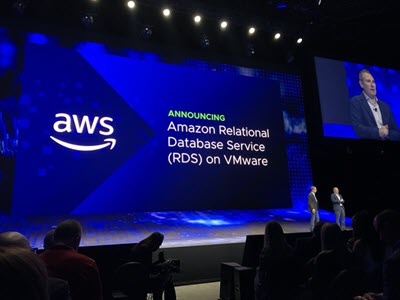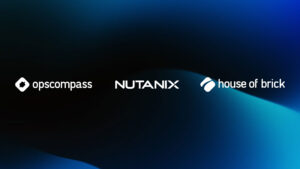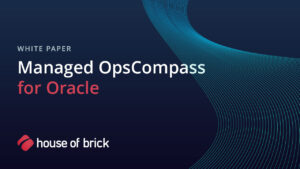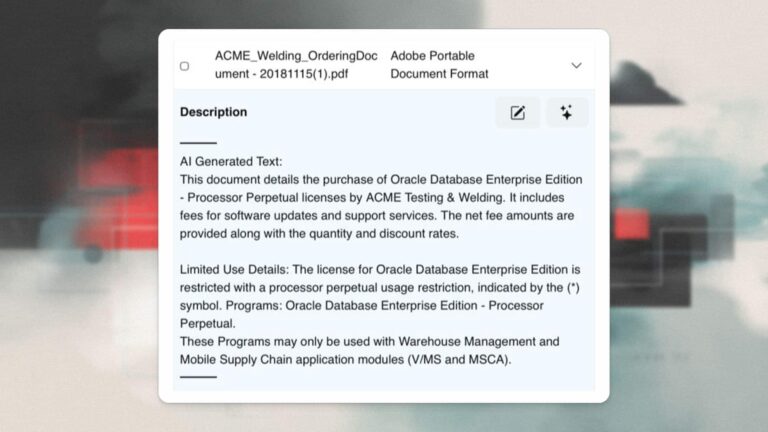Bob Lindquist, Director of Client Services (HoB) and Perry Peterson, Technical Business Development Manager (AWS)
Amazon recently posted a blog announcing availability of AWS RDS on VMware for production use.
Perry Peterson of AWS, and Bob Lindquist of HoB, provide an overview of the choices customers now have to deploy databases on premises or in the cloud leveraging AWS services.
What Is AWS RDS for Oracle on VMware?
BOB: AWS RDS on VMware was announced in 2018 at VMworld. Perry – What is this AWS service, and what’s the latest news on availability?
Amazon Relational Database Service (RDS) is a database specific, managed serviced that makes it easy to setup, operate, and scale a cloud-based, relational database. The service, first released in 2009, removes the undifferentiated heavy lifting of managing a database, allowing organizations to focus on their applications and improving the user experience. With support for several commercial and open source database providers (Oracle, SQL Server, PostgreSQL, MySQL, MariaDB, and Aurora), Amazon RDS supports hundreds of thousands of customers globally.

On October 16, 2019 we added another member to the RDS family, Amazon RDS on VMware, expanding our partnership with VMware beyond the industry leading VMware Cloud on AWS. With initial support for Microsoft SQL Server, MySQL, and PostgreSQL database engines, this service will bring the rich benefits of RDS to customers’ on-premises, vSphere-based environments. Amazon RDS provides cost-efficient and resizable capacity while automating time-consuming administration tasks including infrastructure provisioning, database setup, patching, and backups, freeing you to focus on your applications. RDS on VMware brings many of these same benefits to your on-premises deployments, making it easy to set up, operate, and scale databases in VMware vSphere private data centers.
The service is ideal for hybrid workloads, and those that need to remain on-premises in order to meet compliance requirements for security, privacy, regulatory, or data sovereignty policies. RDS on VMware allows organizations to leverage their current on-premises infrastructure investments, using a familiar set of VMware tools, while enabling the benefits and scale synonymous with AWS.
AWS Oracle RDS on VMware Benefits
PERRY: House of Brick has been virtualizing database workloads for some time. Bob – What have been the benefits and how does RDS on VMware fit into database virtualization best practices?
Since 2006, House of Brick has been assisting clients in virtualizing their Oracle workloads. It is now considered a best practice to deploy Oracle – and other business critical databases like SQL Server – on VMware’s vSphere.
The two primary benefits to virtualizing databases have been:
- Reducing License Costs – an opportunity to reduce licensing and annual support costs
- Optimizing Operations – a catalyst to optimize database management and operations
Many HoB clients have seen a reduction of 25-50% (or more) in licensing fees and related maintenance costs. When it comes to operations, unification of database deployments with other IT virtualized systems allows the database platform to use the same tools for operations – significantly simplifying processes and optimizing costs for staff and infrastructure.
With the announcement of RDS on VMware, many clients who have virtualized their database systems on-premises will now have the opportunity to leverage AWS’ scale and efficiencies. For example, clients can focus on developing and deploying new business applications while AWS manages their database patching and ongoing maintenance.
Additionally, a virtualized database deployment that is on-premises can now leverage a hybrid cloud model for off-premises disaster recovery and other needs.
Hybrid Cloud Deployment Options for AWS RDS on VMware
BOB: With customers having virtualized their databases for over a decade on prem, how does AWS help them to further optimize costs & operations?
At AWS, we focus on putting the customer first and working backwards to find the right tool(s) for the right job. Databases are one of the most critical components in an organization’s IT environment, so it is essential that we provide choices for our customers. Whether relational or non-relational, we believe our customers should leverage a database and architecture that is purpose-built for their applications, architectures, and use cases. Our customers are diverse, and in order to support them we work with an extensive network of consulting and technology partners to provide comprehensive and customized solutions designed to help them meet their organizational goals.
Whether its deploying a current commercial database engine (Oracle or SQL Server) on EC2 in a self-managed fashion, leveraging RDS to offload the undifferentiated heavy-lifting of managing the database, or utilizing hybrid architecture comprised of various AWS and third party services, we strive to provide the best solutions based on the needs of the workload, its associated applications, and the organization. For VMware users, the announcement of RDS on VMware in conjunction with VMware Cloud on AWS, as well as native AWS services provide an easy and accelerated path to a hybrid cloud architecture.
The ability to choose the right environment and services for each workload and its associated data is hugely attractive, if not essential, to our customers. Those who are unable to holistically migrate to the cloud are turning to hybrid cloud architectures, which allow them to leverage a mix of on-premises and cloud resources. We see a number of customers deploying hybrid architectures to support their disaster recovery, scalability, cost efficiency, and compliance/regulatory initiatives.
Hybrid Cloud Deployment Options for AWS RDS on VMware
PERRY: I’ve heard from AWS customers that deploying Oracle, and other databases, incorrectly can lead to costly non-compliance issues. What choices do customers have to be audit ready?
When deploying database workloads on VMware, especially enterprise class systems like Oracle, clients must choose wisely to ensure supportability and license compliance. With Oracle’s updated support policy for VMware, clients have several choices to make regarding how they align their deployments to their entitlements.
First, customers of database vendors must understand their licensing agreements. Their contracts and ordering documents will drive how they can deploy their database environments while ensuring licensing compliance.
Second, the architecture needs to be designed to optimize how virtualized databases manage system resources. If the database software is “installed and/or running” on a specific set of cluster nodes, or stand-alone servers, system rules may need to be used to limit the movement of the database(s).
Lastly, customers need to complete annual assessments of their database deployments. These assessments will determine their ongoing audit defensibility, as well as identify opportunities for migration to alternative database platforms.
As an example, a HoB client received an audit notice from Oracle earlier this year. While their virtualized database architecture was in compliance, the audit caused them to consider moving off Oracle. In this case, their team already had Microsoft skills, so they decided to re-platform to SQL Server running on VMware, and the migration was accomplished in less than a year.
House of Brick has many clients who – whether due to audit or other reasons – are moving from Oracle to Postgres, whether on premises or in AWS RDS off-premise. This requires diligence to ensure supportability of vendor or custom applications, as well as proper rationalization of legacy licensing.
Most HoB clients are inherently ready for RDS on VMware as well as other hybrid cloud services. However, it is wise to validate any virtualized database deployment to ensure that all cloud choices are possible.
Next Steps: AWS RDS for Oracle on VMware
BOB: So, Perry keeping all of these things in mind, what is the next step for those who are interested in learning more about RDS on VMware and a hybrid cloud model?
Customers should contact their AWS account manager and schedule an overview of RDS on VMware and related AWS database service offerings. They should also involve a trusted advisor like House of Brick to ensure they follow best practices for integrating database options.
PERRY: What database consulting services can HoB provide to help customers on this topic, Bob?
Typically, clients choose from one of three first steps, depending on their current situation:
- Database Cloud Licensing & Architecture Workshop – this two-day collaborative workshop helps to get started with their database cloud strategy and roadmap.
- Database Cloud Readiness Assessment – this multi-week engagement analyzes the level of readiness for leveraging cloud services from AWS, including RDS on VMware.
- Database Cloud Proof-Of-Concept – whether a non-production POC or production-ready pilot, HoB can help ensure best practice processes are followed and facilitate a successful outcome for their selected AWS service.
Ready to Deploy AWS RDS for Oracle on VMware?
House of Brick focuses on cloud adoption & secure management for enterprise applications and databases. Talk to an expert today!
AWS RDS for Oracle on VMware FAQs
A managed RDS deployment that brings Amazon’s RDS automation (patching, backups, scaling) to on-prem vSphere environments, supporting Oracle, SQL Server, PostgreSQL, MySQL, and MariaDB.
You must bring-your-own-license (BYOL) under Oracle’s Cloud Compute Policy. RDS counts vCPUs (2 vCPUs = 1 Oracle Processor) on your VMware nodes.
- Leverage existing on-prem infrastructure investments
- Offload undifferentiated database administration
- Enable hybrid DR and compliance scenarios
For memory-heavy Oracle workloads, r5 family offers an 8:1 RAM-to-vCPU ratio. db.r5.4xlarge gives 16 vCPU and 128 GiB RAM at predictable licensing counts.
Combine on-prem RDS for VMware with AWS native RDS or EC2 deployments, orchestrating through your AWS account and vSphere tools for unified management.






